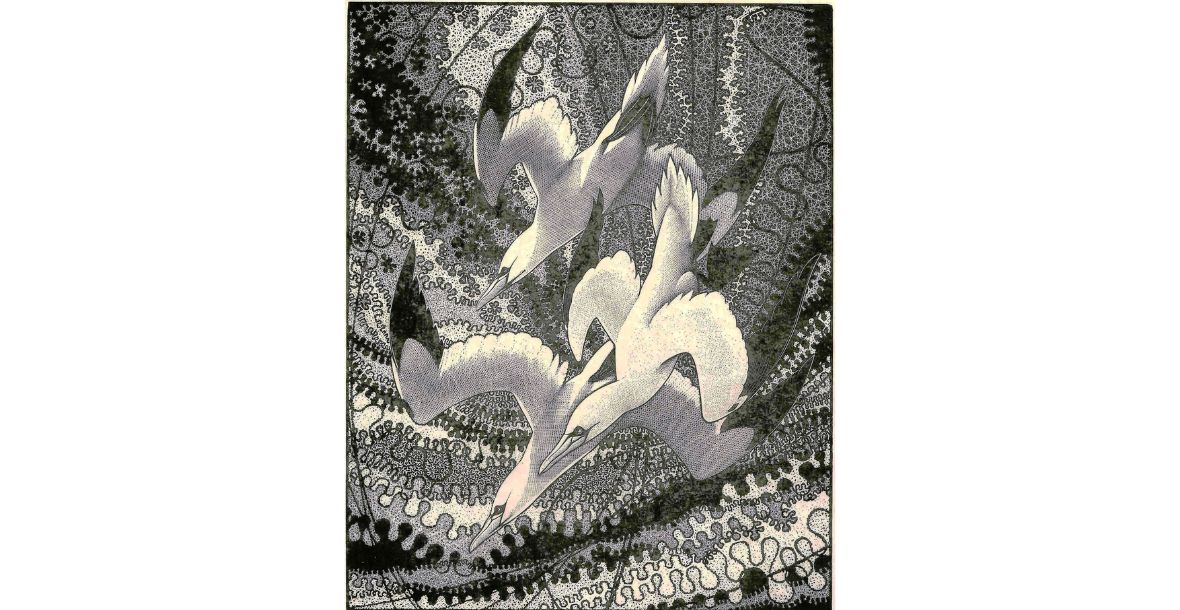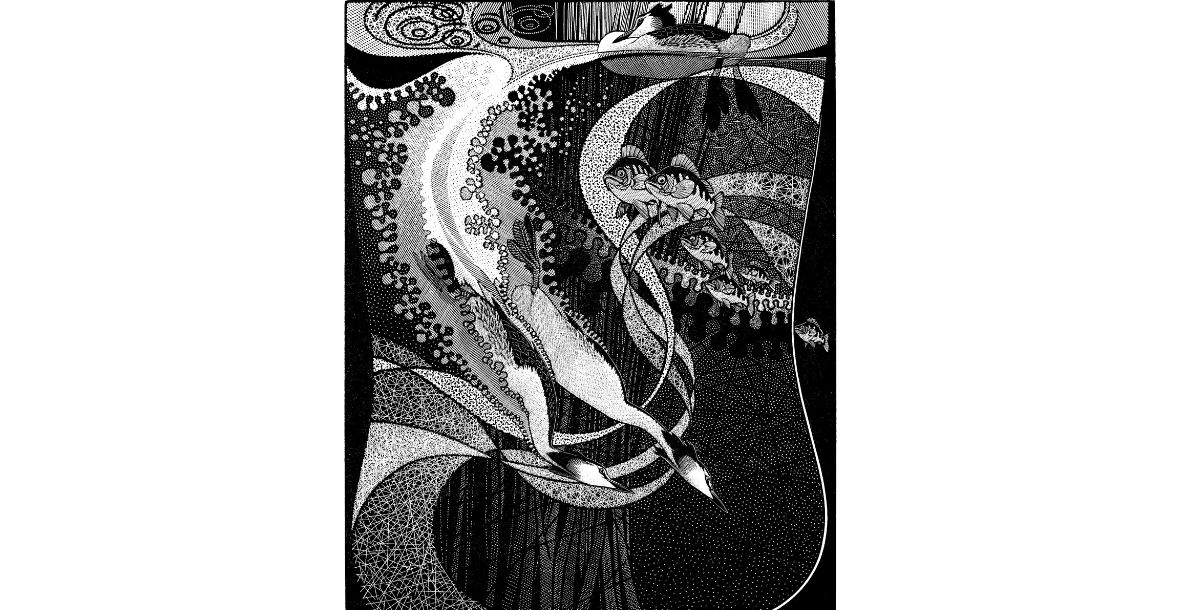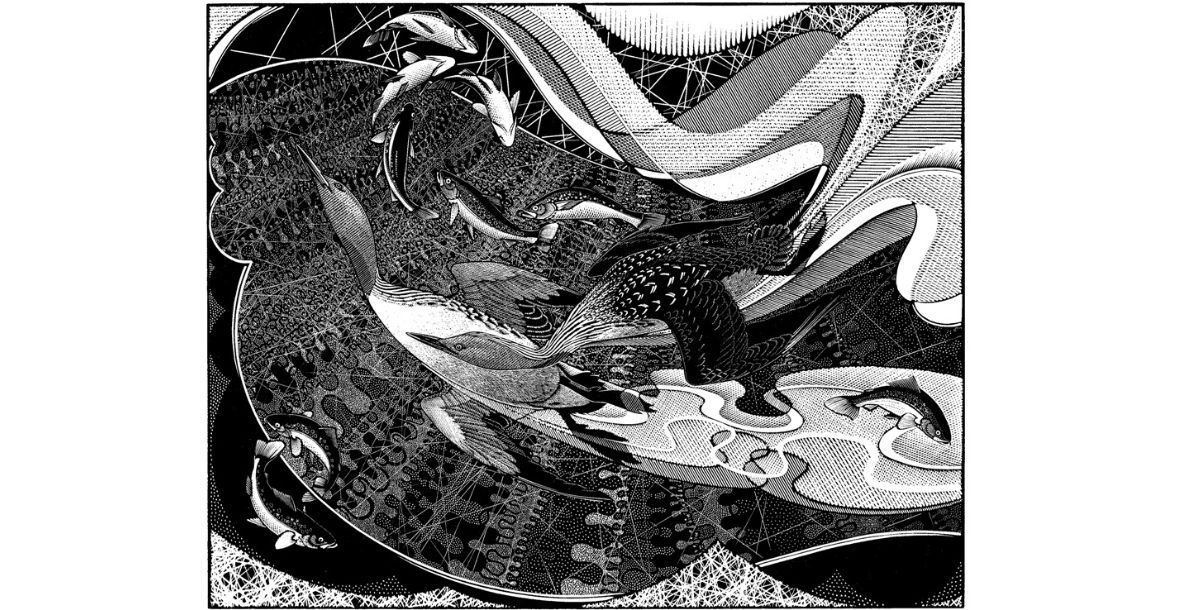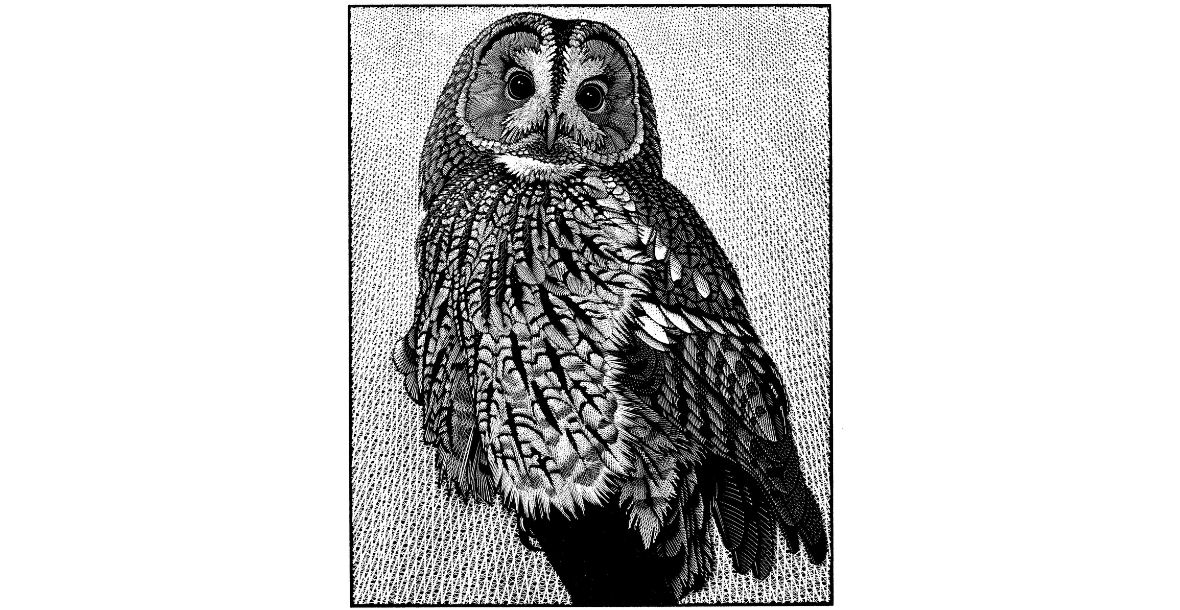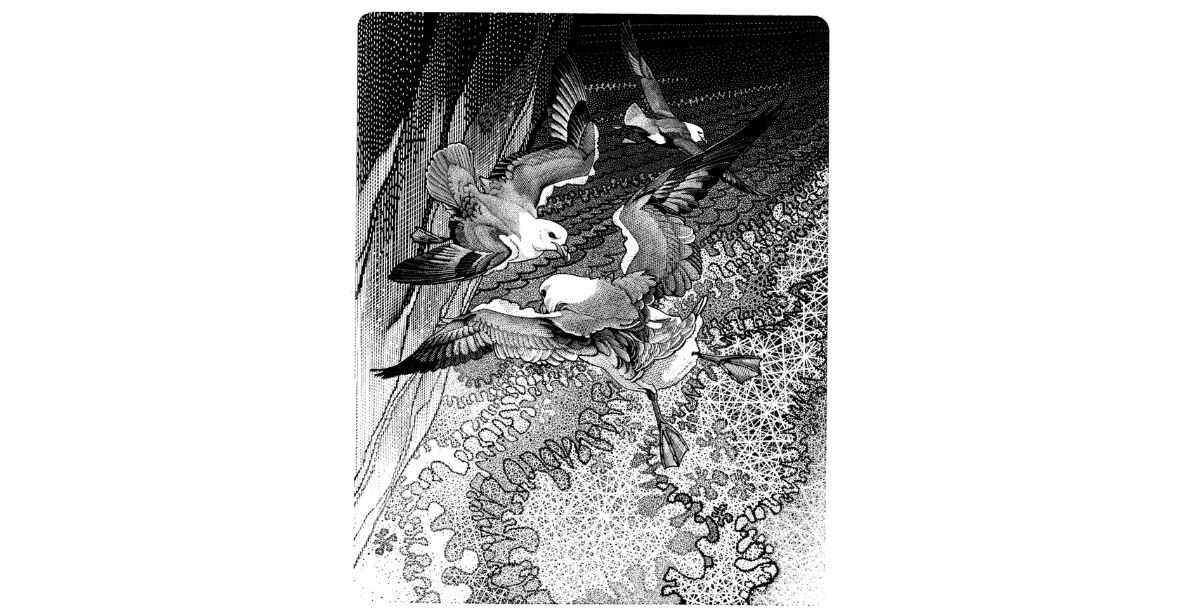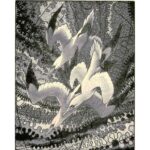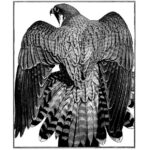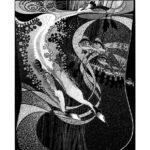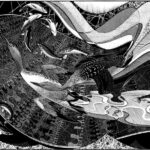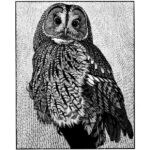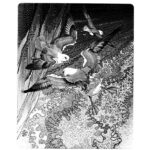Entirely self-taught as an engraver, See-Paynton began to make prints in 1980 and has since produced over 250 editions.
“Wood engraving is a relief printmaking process that for me begins with the development of a design. My initial drawing is taken through a number of progressively more developed stages until I have a quite simple but very clearly defined pure line drawing. This is my finished drawing and is now ready to be transferred to the block.”
See Paynton uses Box wood for the smaller engravings with Lemon wood for the larger engravings. Each wood engraving can take See-Paynton anything from a week to three or four months to complete, depending on the size and intricacy of the image. Once the engraving is complete, ink is applied with a roller to the newly created ‘relief’ surface. Paper and ink normally dry within 48 hours, they are then signed and numbered. Each print is an original print, taken from the block.
Colin has brought a new vitality to one of the earliest forms of printmaking. Although his work is based on the meticulous observation of the natural world, his talent is to invent compositions which distil the ecological and behavioural relationships of the species and their habitats. He uses his knowledge and imagination to construct engravings of great complexity and refinement and has evolved something new by the patterning and layering of his images. Later compositions, particularly those from an underwater viewpoint, use an increasingly abstract and fluid line to capture the fast and fleeting movements of birds and fish.
Colin See-Paynton is a Fellow of the Royal Cambrian Academy, Honorary Fellow of the Royal Society of Painter-Printmakers and a member of the Society of Wood Engravers. He is widely regarded as one of the leading exponents of wood engraving in the United Kingdom and his work is represented in many private and public collections around the world including the V & A, Ashmolean Museum, Berlin Graphothek, Fremantle Museum & Art Gallery, Australia, Gaudi Salon, Barcelona, Guangdong Museum of Art, China, National Library of Wales, National Museum of Wales and the Yosemite Wildlife Museum, California. He has travelled with the Artists for Nature Foundation to the Pyrenees and to Alaska to record and highlight through his art the threat to wildlife caused by man’s exploitation of the natural resources of these areas.
For more information about the exhibition, please click here.

